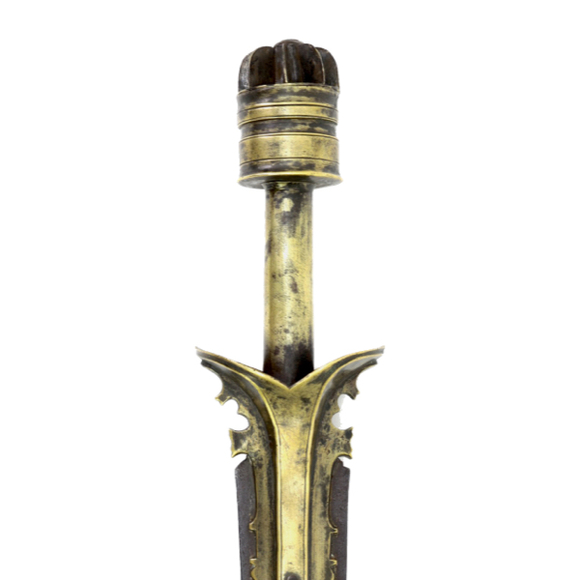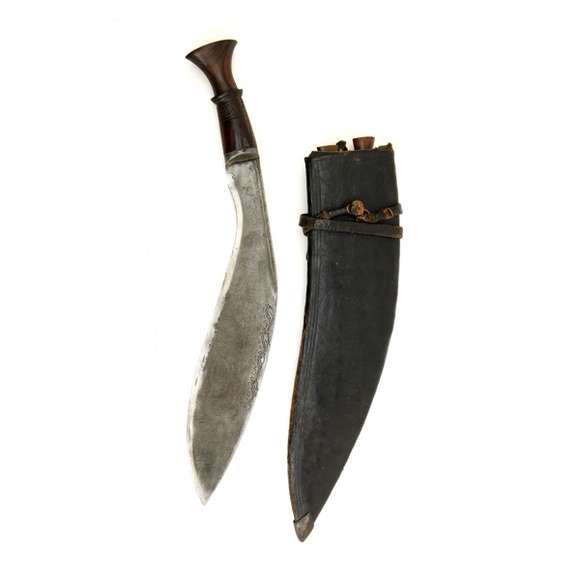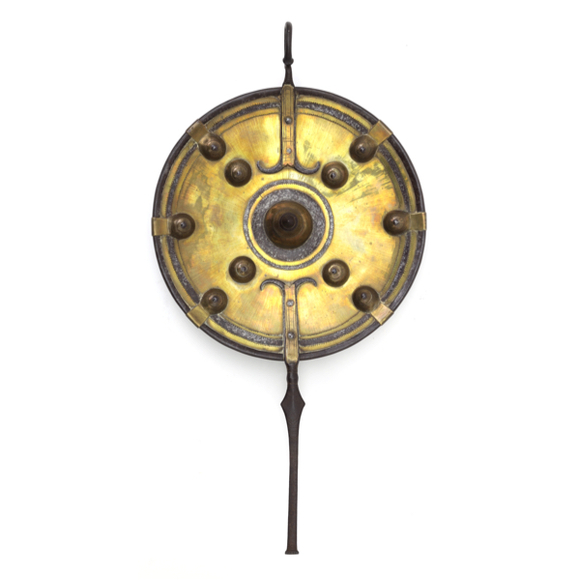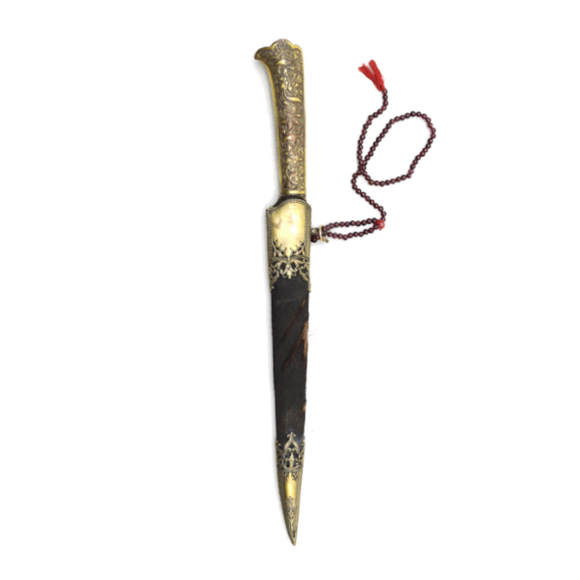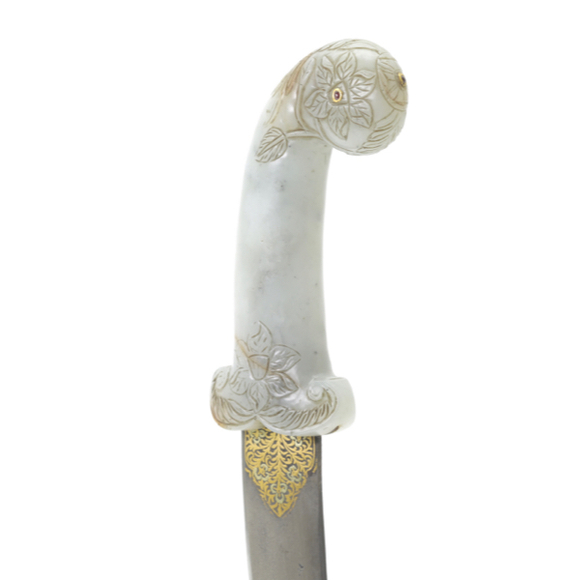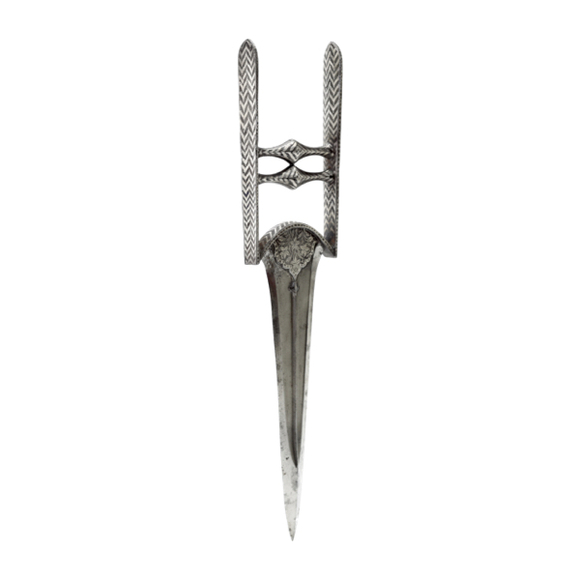An early fighting piece with strong reinforcing langet and broad, cobra shaped tip.

103 cm / 37.4 inch
83.8 cm / 29.4 inch
forte 19.5 mm
(measured over langets)
middle 3.5 mm
near tip 3 mm
forte 45 mm
middle 43 mm
near tip 62 mm
1337 grams
22.7 cm from guard
India
Wootz steel blade, iron hilt. Velvet hilt lining.
17th or 18th century.
Introduction
The khanda represents one of the oldest forms of Indian swords, it's present form is first seen on temple reliefs in Orissa dating back as early as the 2nd century A.D. Its name derives off the Sanskrit khaḍga meaning "breaker, divider, cutter, destroyer". Always strongly associated with Orissa, the sword did become popular all over India, from the Rajputs and Sikhs in the north to the Marathas of the Deccan and the Nairs in the south. In some of these cultures it was an element of worship, symbolizing wisdom cutting through ignorance. As such it also features widely in religious art, not only in India but through the Himalayas, China, even into Japan.
On a practical level the khanda is a straight cutting sword, (partially) double edged, with a widening blade and an obtuse tip. Most fighting examples have considerable weight in their tip for powerful cuts. The blades often have reinforcements in the form of a long langet at the base of the blade or reinforcing strips on either side of the blade. In the 1600's the characteristic Hindu basket hilt was developed for increased hand protection.
Notes to introduction
Rawson, P.S.; The Indian Sword, Herbert Jenkings, London, 1968. Pages 6-8.
Stone, G.C.; A Glossary of the Construction, Decoration and Use of Arms and armor, 1934. Reprint by Dover, 1999, p. 352.
This example
Presented is a large and impressive khanda, crafted entirely out of steel. The gigantic blade, entirely of fine wootz, is of the classic "spoonbill" type resembling the bill of the bird with the same name. Where most khanda have only a partially double edged blade, this blade is entirely double edged and has a faint medial ridge. It is reinforced at the base with plates with stylized contours and dimples, which in turn held by the solid steel langets of similar form that are part of the hindu basket hilt. The crossguard that sits on top of the plate guard terminates in ornamental finials, one holding a ring. The hilt is of modest form, but of attractive geometry and well-executed with fine fluting, dimples, cutouts and chiseled elements.
At the pommel end is a long spike that may be used to catch a blade that slides off the knucklebow, preventing it from hitting the arm, be employed for a double handed strike, or used as a spike to poke with. Experts don't agree on the specific function of the spike, but it looks like it could well serve for all three purposes mentioned.
The red velvet padding is a recent addition, but appropriate in style, execution and materials. The handle retains its original wrapping. The sword is in very good condition overall with no recent damage or repairs. The blade largely retains its original contours, undamaged with the exception of some minor dents at the tip. The piece is in as-found condition with old patina throughout.
Conclusion
An impressive khanda. Its large classic spoonbill-shaped blade of fine wootz steel. The all-steel handle, of attractive geometry and quality execution. In very good, original unrestored condition.
SOLD
Interested? Questions?
Contact peter@mandarinmansion.com


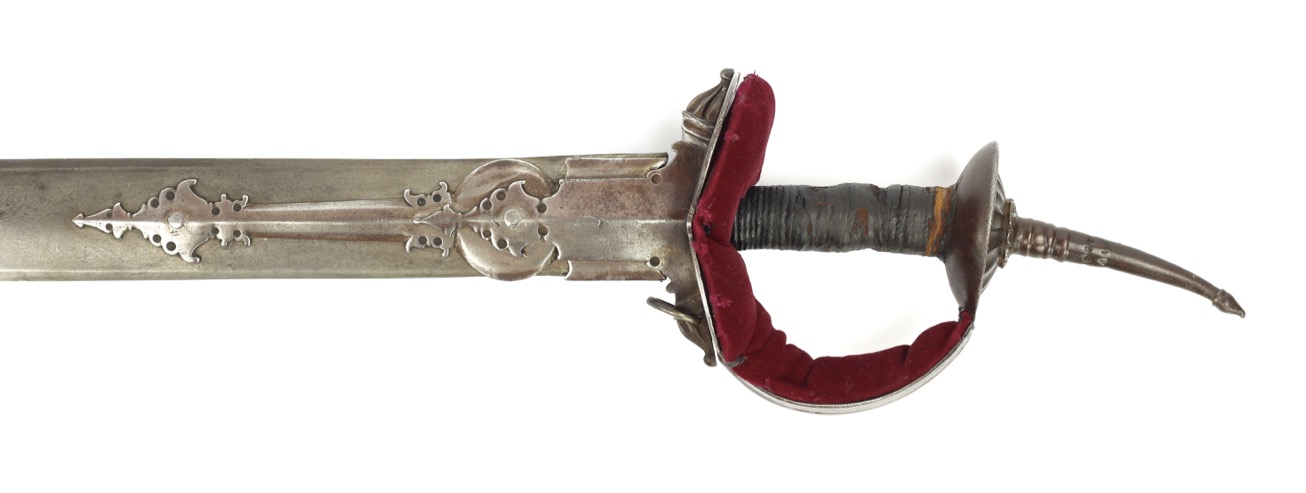
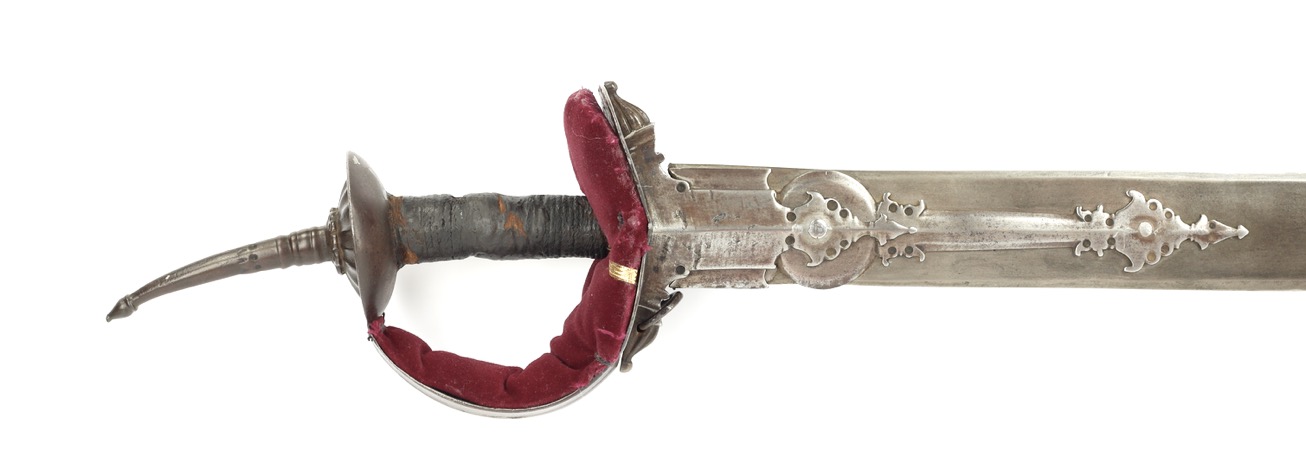


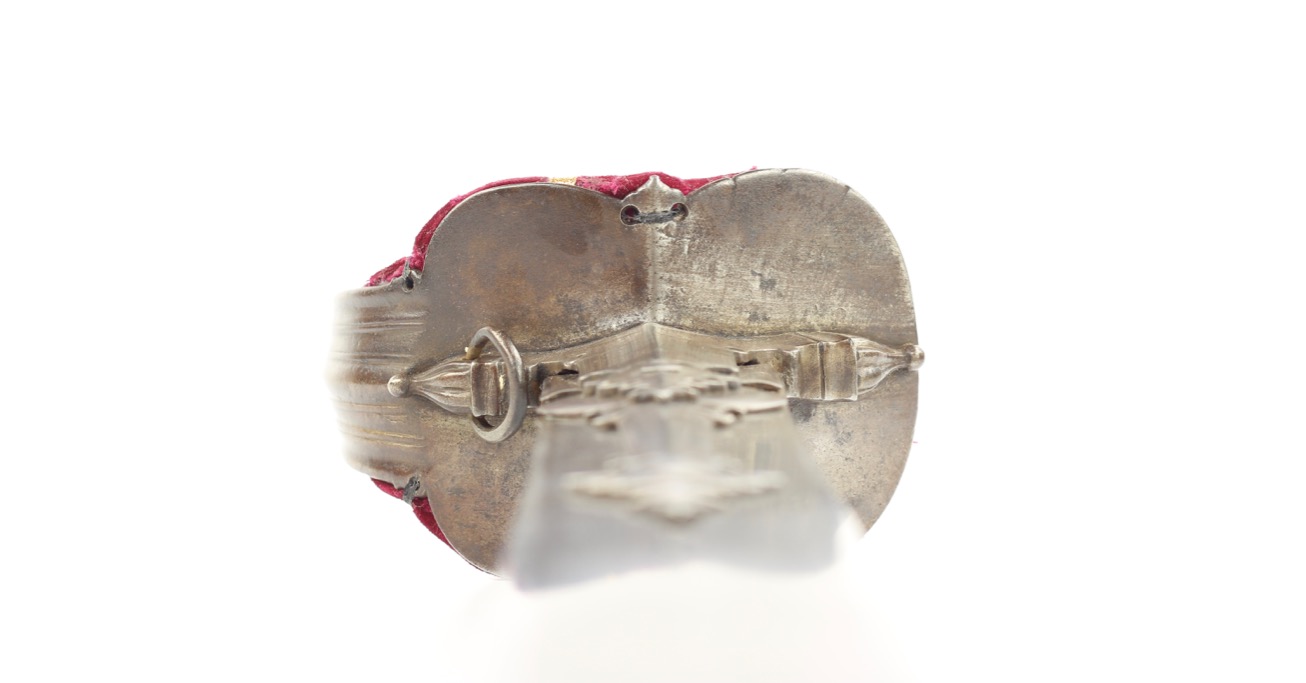
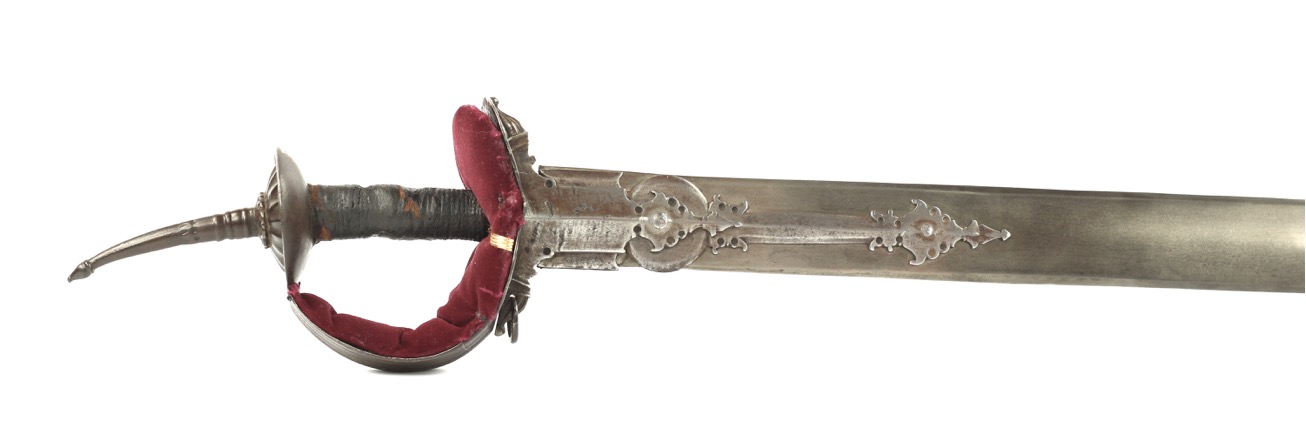
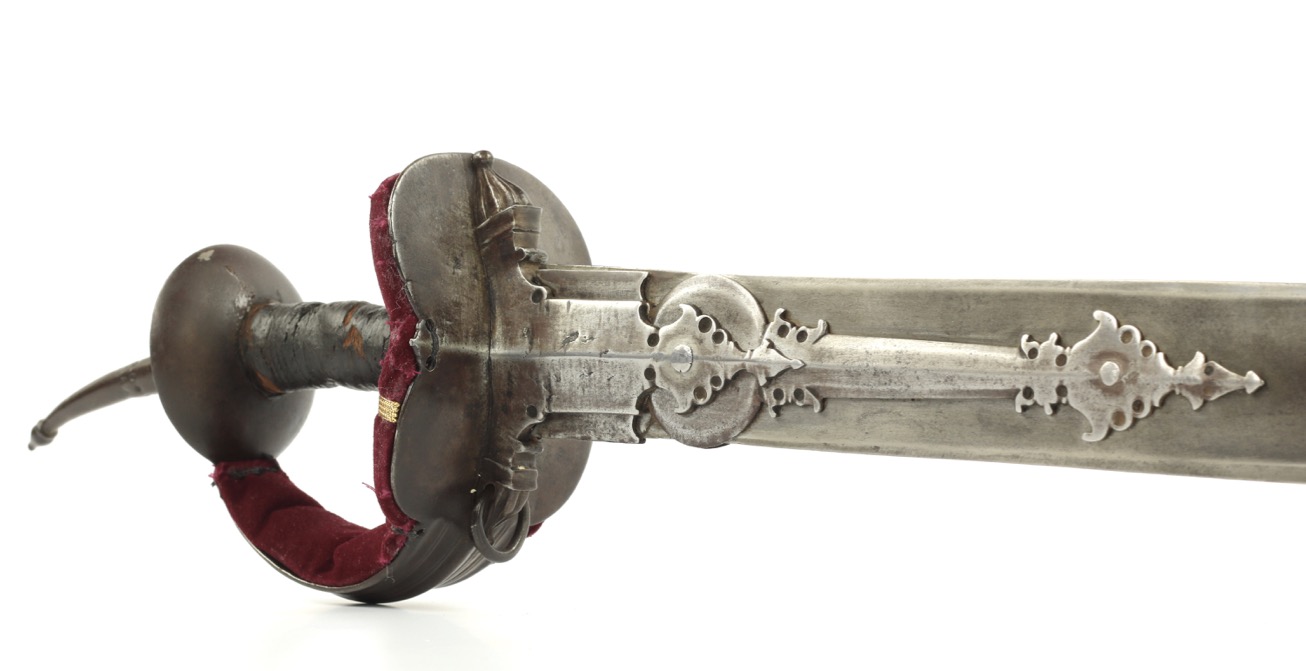
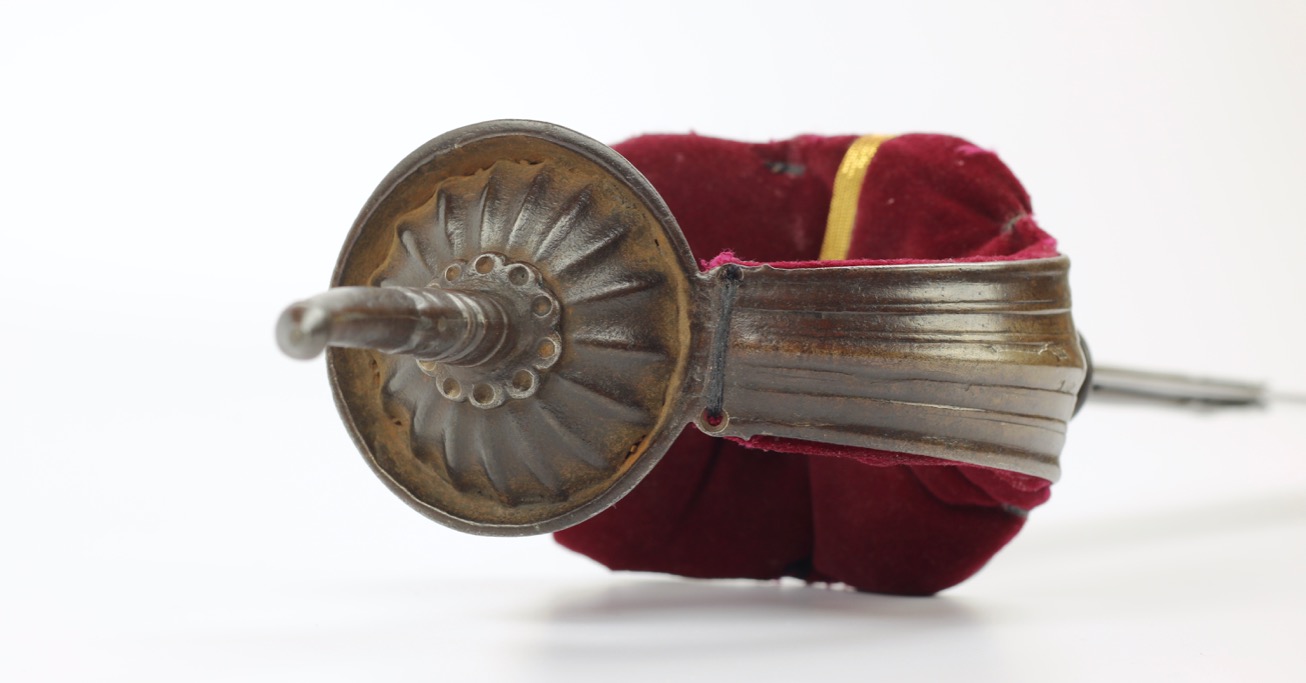
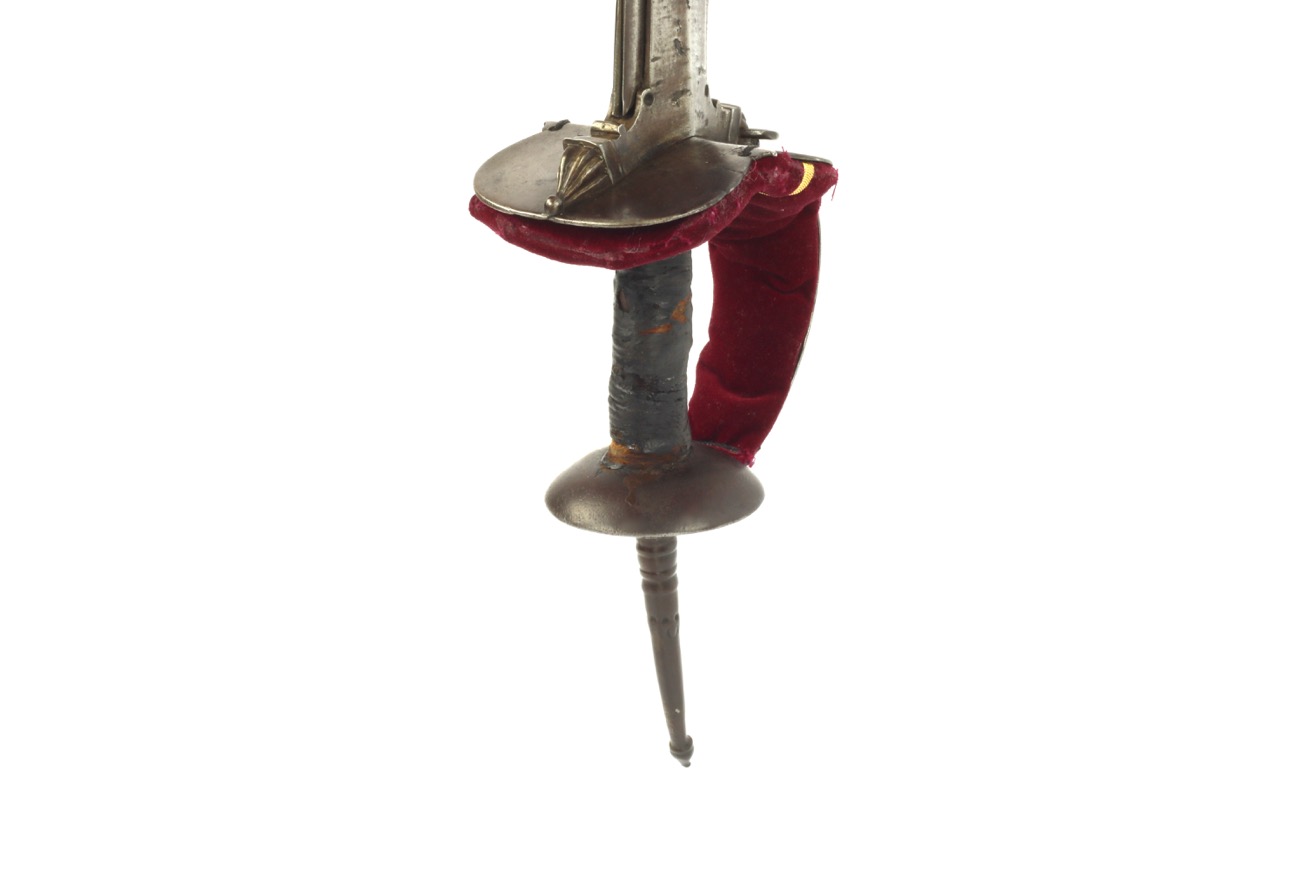
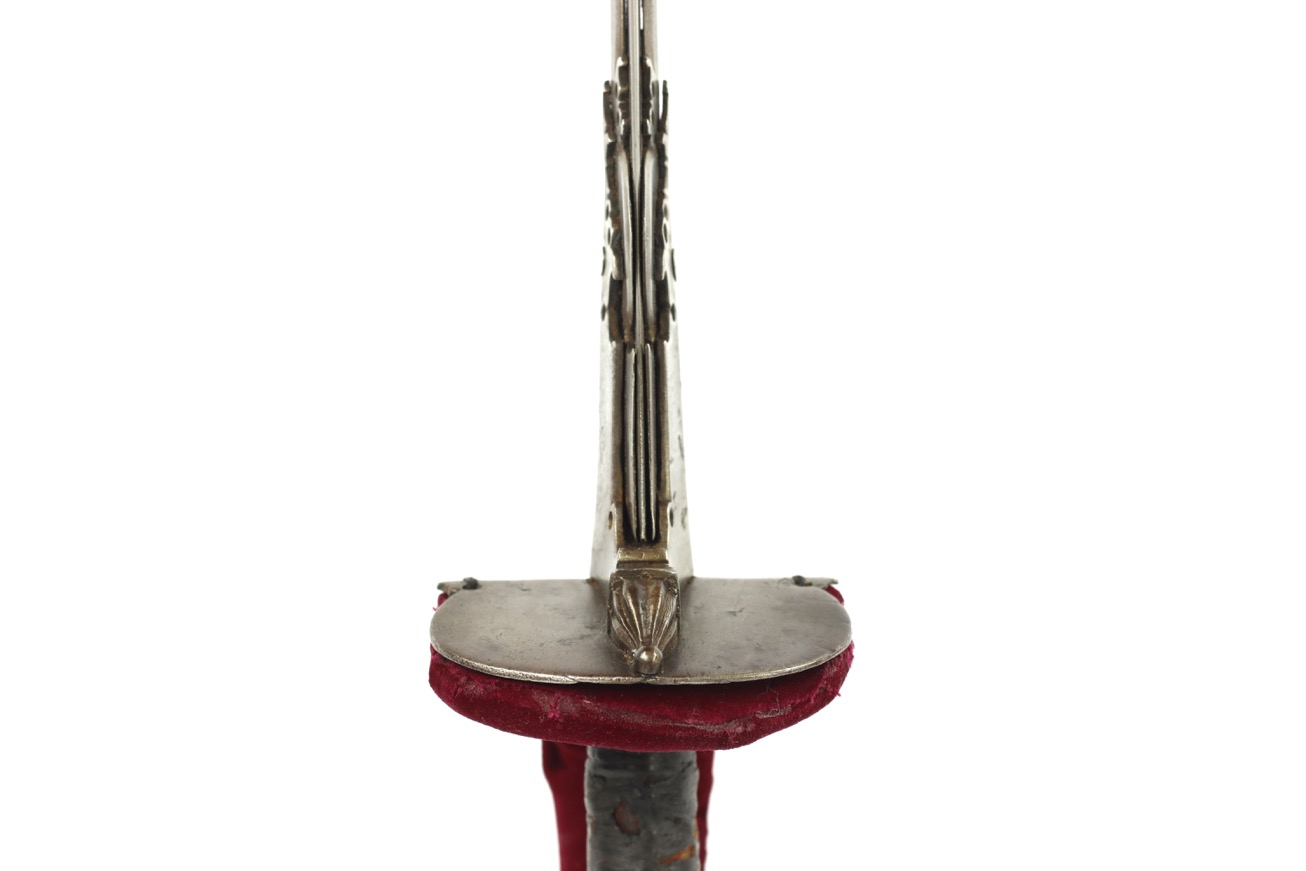
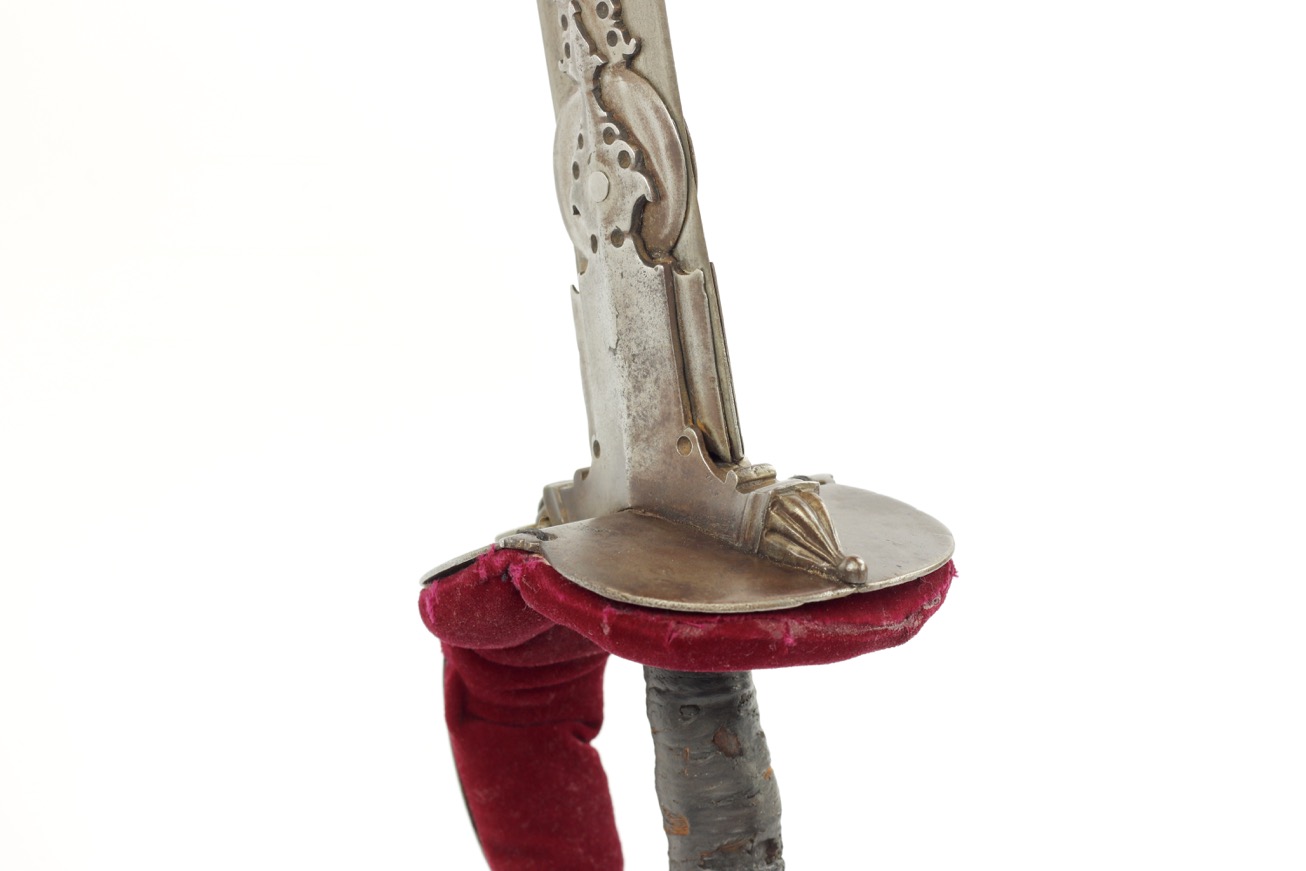
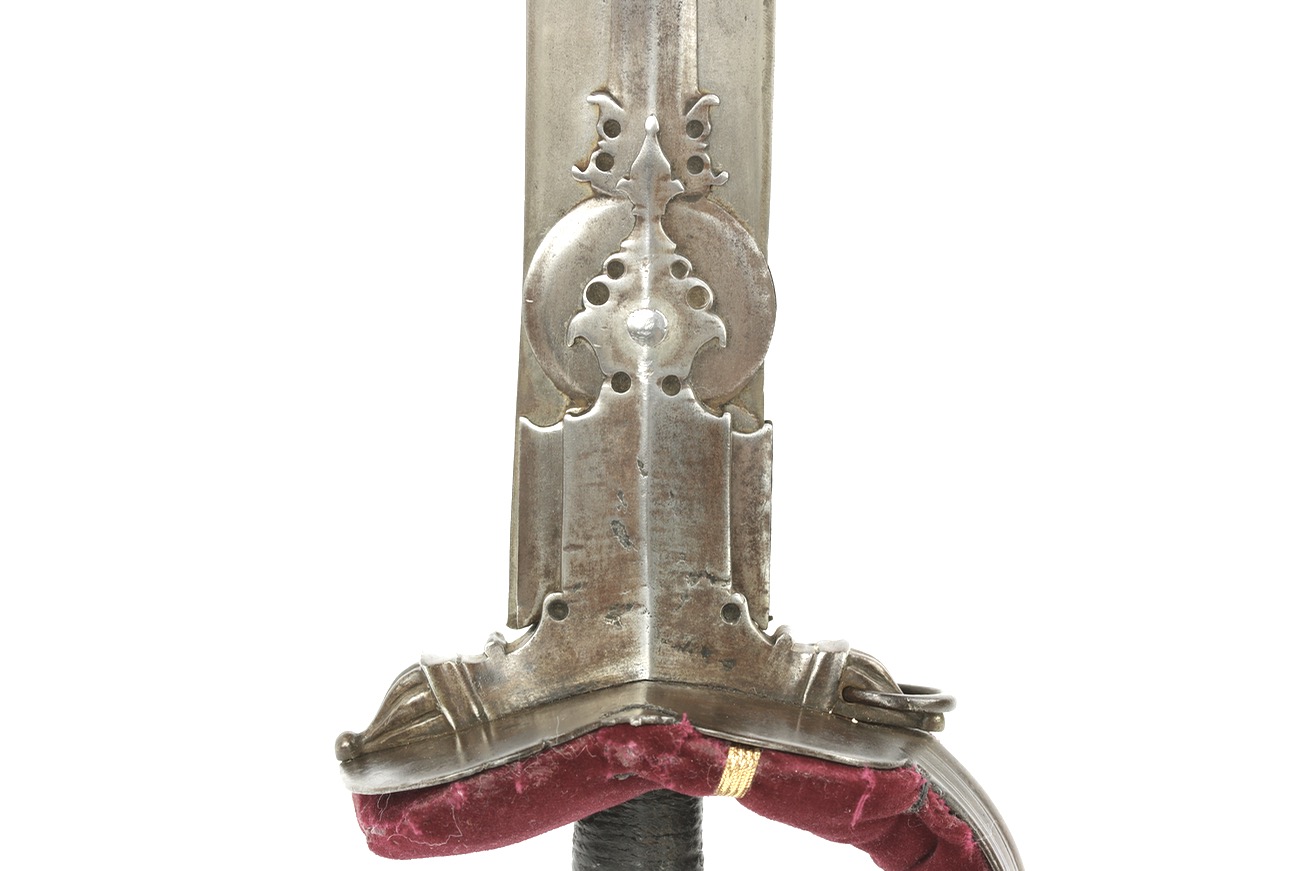
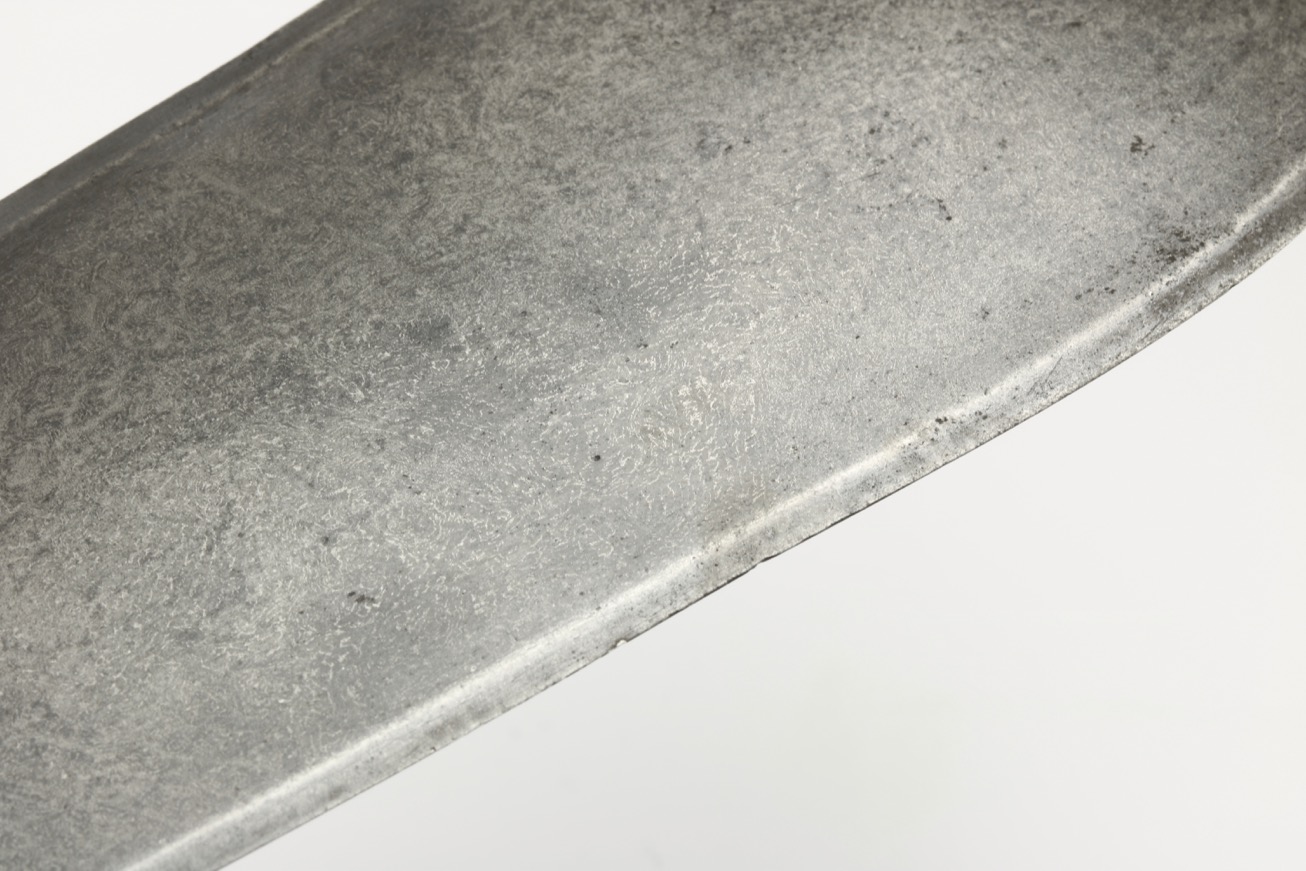
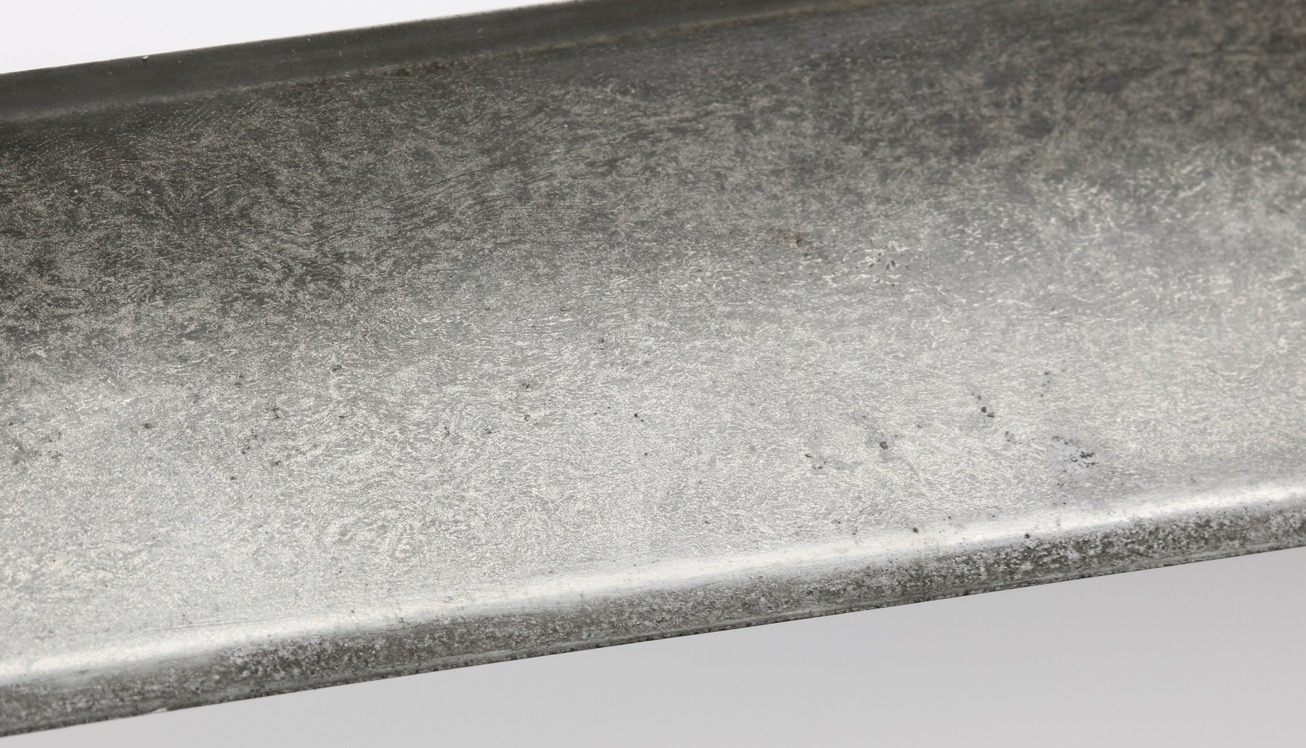
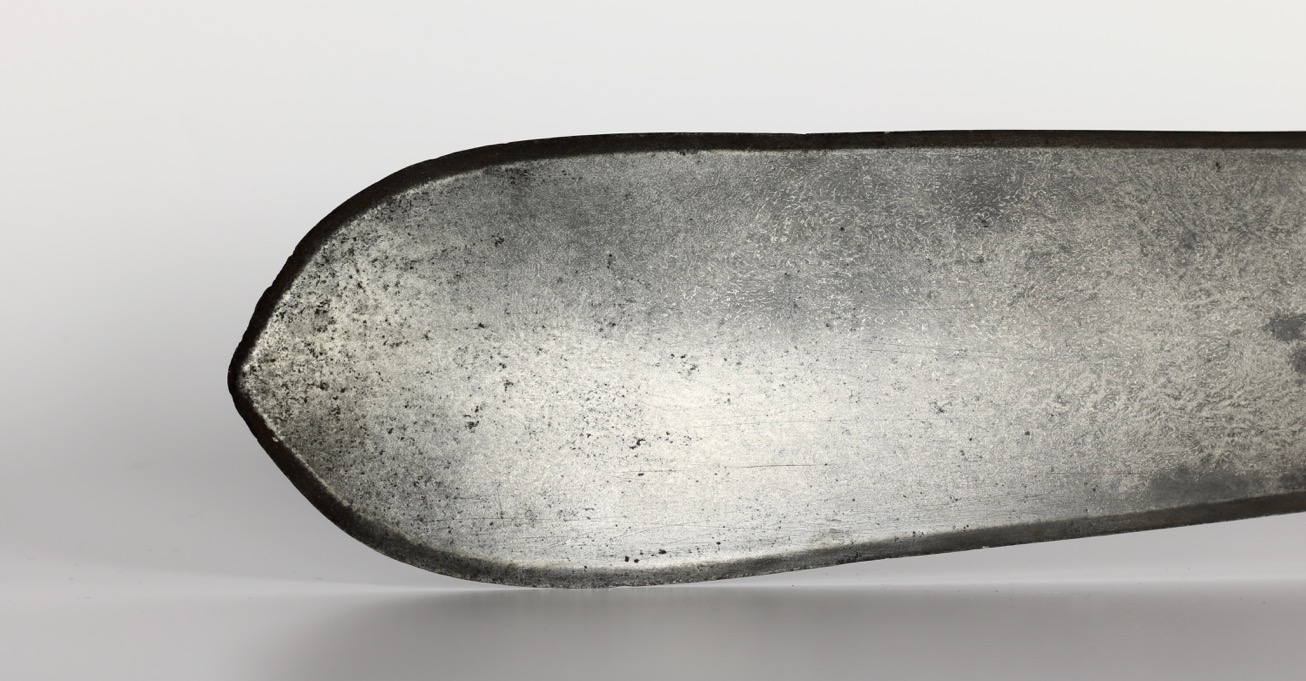
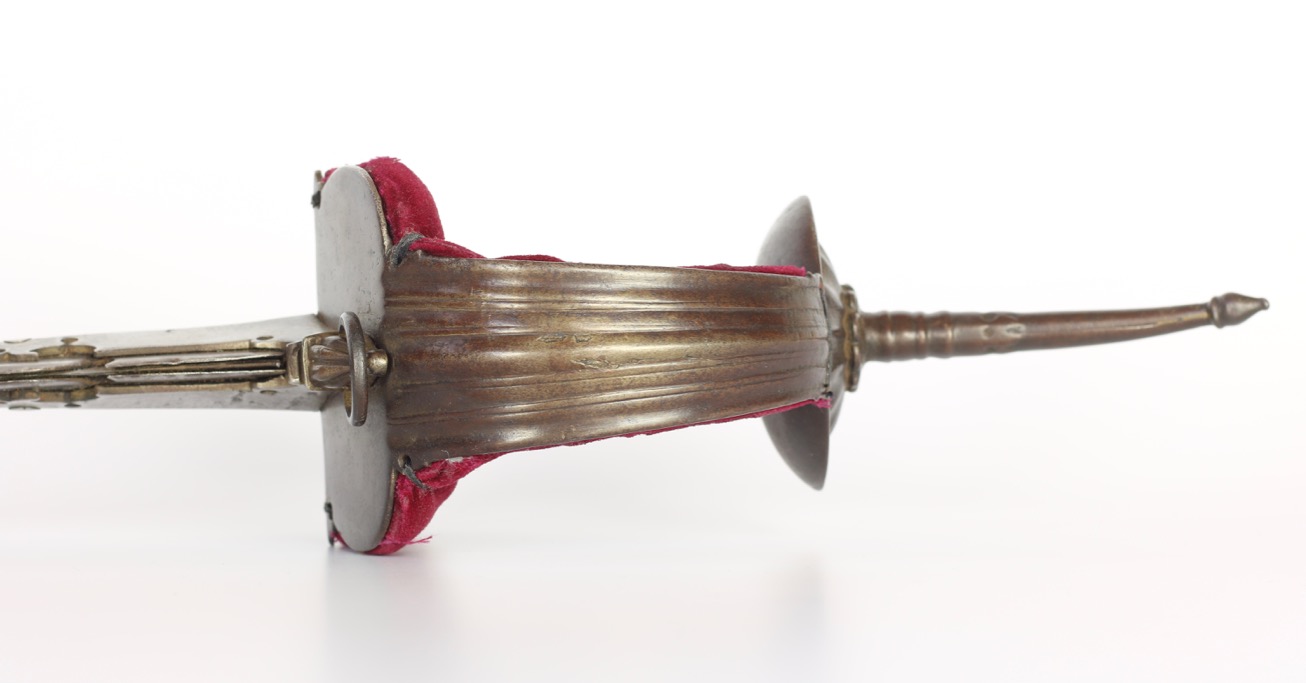
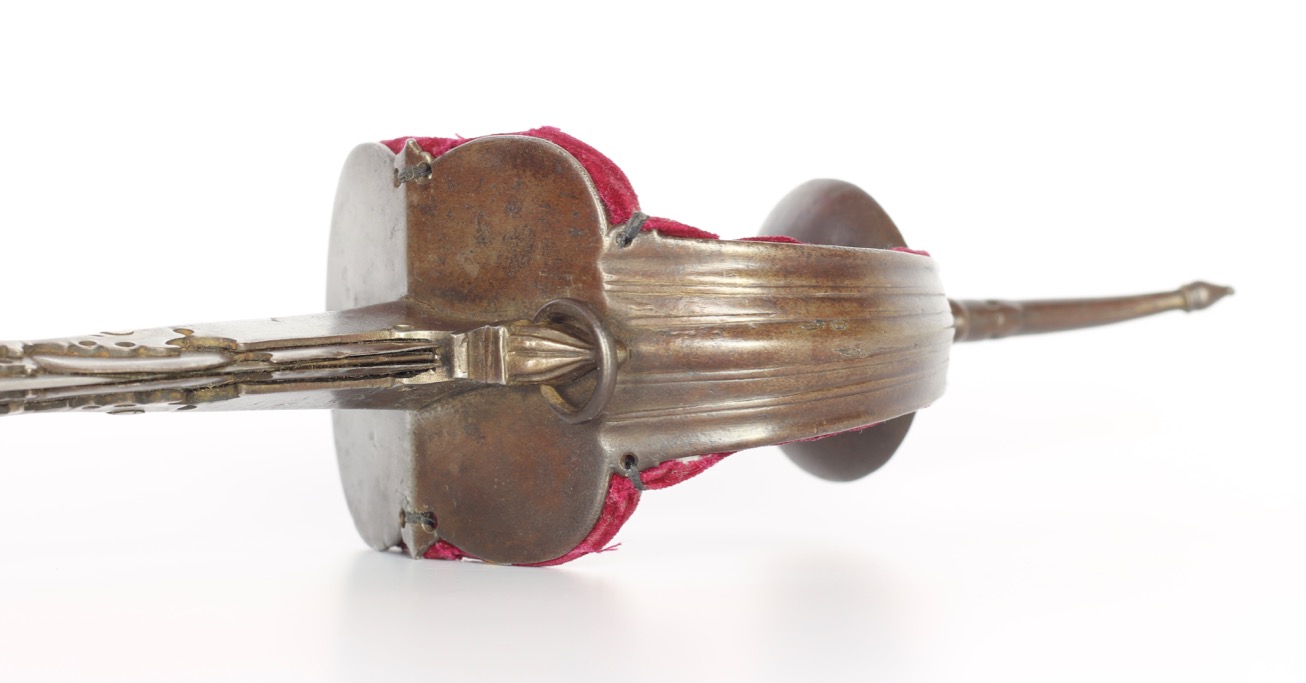
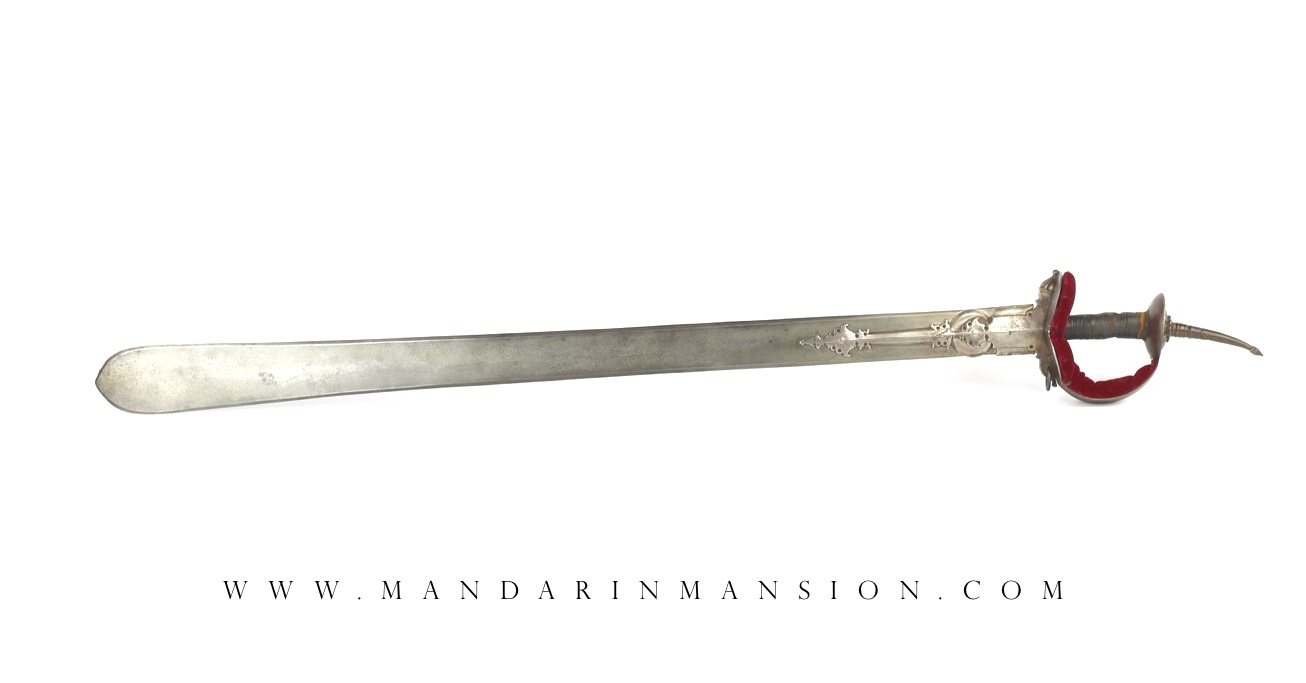
Peculiar shield with catching hook, used by the Santali people of Bengal.

